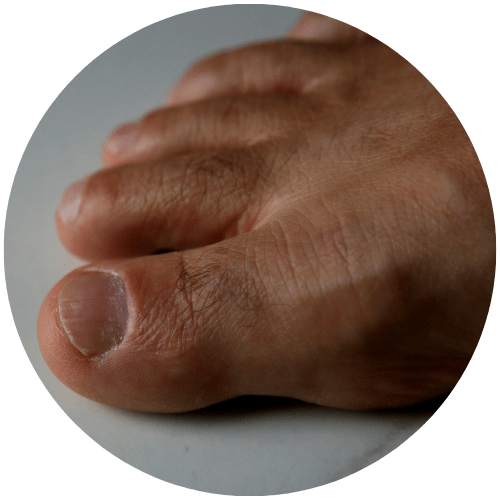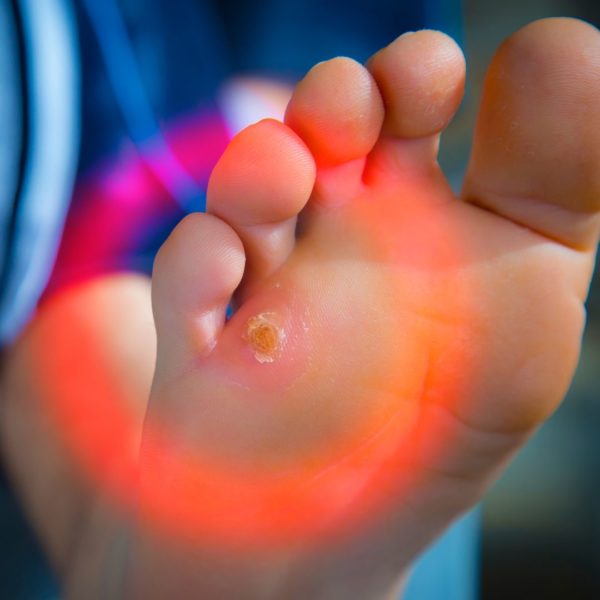Podiatrist in Bellmore
Our Podiatrist in Bellmore – Dr. Joseph Burke
 Dr. Joseph Burke and his team at Cherrywood Foot Care serving the communities of Bellmore, North Bellmore, Merrick, Wantagh, and East Meadow utilizes the latest cutting-edge podiatric technologies, from diagnostic ultrasound, digital radiology, and Noveon laser technology for toenail fungus treatment, to shock wave therapy for heel pain and the minimally invasive surgical procedure, endoscopic plantar fasciotomy. Dr. Burke specializes in the biomechanics of the foot, including custom orthotics and surgical correction of foot deformities. For the best podiatrist in Bellmore, Cherrywood Foot Care is the best way to treat your foot condition!
Dr. Joseph Burke and his team at Cherrywood Foot Care serving the communities of Bellmore, North Bellmore, Merrick, Wantagh, and East Meadow utilizes the latest cutting-edge podiatric technologies, from diagnostic ultrasound, digital radiology, and Noveon laser technology for toenail fungus treatment, to shock wave therapy for heel pain and the minimally invasive surgical procedure, endoscopic plantar fasciotomy. Dr. Burke specializes in the biomechanics of the foot, including custom orthotics and surgical correction of foot deformities. For the best podiatrist in Bellmore, Cherrywood Foot Care is the best way to treat your foot condition!
Frequently Asked Questions
CAN I TREAT MY INGROWN TOENAIL AT HOME?
Depending on how severe your ingrown toenail condition has developed, home remedies may prove to be enough to cure your ailment. Cherrywood Foot Care, podiatrist in Bethpage that accepts Healthfirst, and we can diagnose and provide you with the correct treatment needed. Below are a few home remedies you can try:
- Soak the affected area in warm water with Epsom salts and castile soap several times a day for 15-20 minutes. This will help relieve pain and can reduce the chances of a future infection.
- Carefully peel back the skin away from the ingrown nail, and place a small piece of cotton between your nail and skin. Replace the cotton as needed after every soak.
- Use an antibiotic cream on the affected toenail and cover it with a bandage.
- Wear shoes that have enough space for your toes, and wear sandals rather than shoes to limit any pressure on the affected toe.
WHAT IS TOENAIL FUNGUS?
Toenail fungus is one of the most common conditions we come across. They typically start as a discolored spot on the tip of your nail that continues to grow deeper. As it grows, it may discolor the entire nail, and it can even spread to other nails as well. If you believe you have toenail fungus and would like to get diagnosed, contact us at Cherrywood Foot Care, a podiatrist in Merrick will help you.
What is Athlete’s Foot?
Athlete’s foot is a fungal infection that develops on your feet. Those who have sweaty feet and leave them in tightly fitting shoes are more likely to develop this condition. Fortunately, our team will be able to help should this occur. If you begin dealing with any of the below symptoms, consider scheduling an appointment with our team:
- Scaly rash.
- Itching.
- Burning.
- Chronic dryness.
HOW DOES DIABETES AFFECT YOUR FOOT HEALTH?
Diabetes is known to cause vascular and nerve damage, leaving diabetics more susceptible to foot problems. Of the many problems diabetics may face, peripheral neuropathy and peripheral vascular disease are two major conditions that cause diabetics to have problems with their feet. Take note of all the following conditions, causes, and symptoms of diabetic foot problems in order to give yourself the best chance to get the help you need.
What is a sprained Ankle?
A sprained ankle is a common condition that occurs when the ligaments surrounding the ankle are injured. Ligaments are connective tissues that hold the ankle bones together, support the joint, and hold the position of your ankle in place. When the ligaments are stretched beyond the normal range of motion, this can cause pain and discomfort when pressure or weight is applied to the area.
What Are Heel Spurs?
A heel spur is a calcium deposit that sticks out from the back of your heel that can cause large amounts of pain and irritation. These buildups usually arise over the course of many months and are the product of strains on the muscles and ligaments in the foot. Plantar fasciitis is also a common factor associated with the formation of heel spurs. The plantar fascia is a fibrous band of connective tissue that connects the heel bone to the ball of your foot, and when this becomes inflamed it is known as plantar fasciitis.
What is a Bunion?
A bunion is a bone deformity that occurs due to a joint enlargement at the side and base of the big toe. They can lead to redness, swelling, and soreness around the big toe joint, and even limit movement as well. Over time, bunions can cause your big toe to become angled over your smaller toes.
Ingrown Toenails
Most often seen in the big toe, ingrown toenails can be very uncomfortable and can often reappear if not treated properly. If you suffer from ingrown toenails, our podiatrist near East Meadow at Cherrywood Foot Care can help.
What is an ingrown toenail?
Ingrown toenails or onychocryptosis is a condition in which the corner or side of a toenail grows into the skin. Once the edge of the nail breaks through the skin, it causes inflammation. Initially causing discomfort, it may progress into an infection and/or become a recurring problem. Typically the symptoms of an ingrown toenail are redness, pain, and swelling. If untreated, it may cause an infection, or the skin may start to grow over the ingrown toenail.
Causes of ingrown toenails
Ingrown toenails can be hereditary or caused by other problems such as:
- Improper nail cutting.
- Ill-fitting shoes.
- Having unusually curved toenails.
- Injuring your toe or toenail.
Left untreated or undetected, an ingrown toenail can infect the underlying bone and lead to a bone infection. If you have an ingrown toenail, don’t wait for it to get worse. Visit our podiatrist in Bellmore at Cherrywood Foot Care before it becomes a bigger problem.
Ingrown toenail prevention
There are some ways to prevent ingrown toenails from occurring. Here are some ways to prevent an ingrown toenail in the future:
- Cut your toenails straight. Don’t curve your nails to match the shape of the front of your toe.
- Cut toenails often enough to keep them at a moderate length.
- Wearing shoes and socks that are not too tight.
- If your job puts you at risk of a toe injury, wear protective footwear, such as steel-toed shoes.
- Keep your feet clean and dry as much as possible.
How we can help
If your ingrown toenail is causing severe discomfort or there is redness in the toenail area, it is important to make an appointment with our podiatrist in Bellmore for treatment. If you have a condition that causes poor circulation to your feet, such as diabetes and you experience any foot sore or infection, it is essential that you seek medical attention. Our experienced team at Cherrywood Foot Care can help you and give you the treatment you need. You don’t have to let ingrown toenail pain negatively affect your quality of life forever! Contact us to make an appointment with our podiatrist in Bellmore at Cherrywood Foot Care today!
Metatarsalgia
Metatarsalgia is a condition where inflammation occurs in the balls of one’s foot. It is often prevalent in active runners or athletes in sports with a lot of foot pressure. It can also be caused by uncomfortable or tight footwear. If you are looking for a podiatrist in Bellmore to help with this problem, the doctors at Cherrywood Foot Care may be able to help. Although it is usually not serious, it may be caused by other health problems, including deformities in the foot, or more serious medical conditions. Metatarsalgia can often be helped with therapy or orthotics.
Because it is usually not serious, metatarsalgia is easy to treat at home, usually by resting or icing the feet and putting a bandage over it. If pain occurs after the first 24 hours, seek medical attention, as it could be a result of a more serious medical problem. At Cherrywood Foot Care, they can prescribe orthotics that can help ease foot pain, which is custom fitted to one’s foot. Cherrywood Foot Care does not recommend over-the-counter orthotics, as those are more mass-produced rather than fitted to one’s individual foot needs, and they are often made of a foam material which does not fit your foot properly.
The podiatrist in Bellmore at Cherrywood Foot Care can also provide X-rays to get an exam of one’s foot, to see if there may be another problem in the foot causing the pain. Although usually not serious, metatarsalgia may be the result of other medical issues in the foot including high arches or a hammertoe deformity. These issues are often common in diabetics, so if your metatarsalgia is caused by another medical issue, such as arthritis or diabetes, let your doctor know, as they can then help with that. Because diabetics are more prone to foot problems, the doctors at Cherrywood Foot Care may either prescribe a diabetic patient custom orthotics or some other treatment option.
Contact our Bellmore Podiatrist
The podiatrist in Bellmore at Cherrywood Foot Care can help you with your metatarsalgia, by telling you what the cause of it is, as well as telling how to treat it, and providing the proper prescriptions if needed.
Foot Warts
A wart is a viral infection that can spread rapidly when untreated. Although they’re harmless, foot warts can be especially painful. The infection can be caused by cuts or abrasions on the skin, whether they’re big or small. When it comes to our feet, warts can be found in almost any area. They are normally raised and can be easily seen with its fleshy appearance. If you have noticed any warts recently and are looking to get rid of them, set up an appointment with Cherrywood Foot Care, a podiatrist in Bellmore. Our location is convenient for anyone living in Bellmore, North Bellmore, Merrick, Wantagh, and East Meadow, NY.
What is a plantar wart?
Plantar warts, also known as verrucas, can be identified as hard, grainy growths that are located on the bottom of the foot. Unlike other warts, the plantar wart can be identified through these features:
- Non-raised or flat appearance
- A coarse surface on the foot
- Gray/brown coloring
- Black dots or pinpoints near the center of the wart
How do they form?
You might be wondering, “how did I get this wart?” There are countless ways you could have contracted this virus. Kids and teens are more likely to contract warts than adults, but this does not mean everyone shouldn’t be aware of them. There are a few ways you can contract foot warts. Those may include:
- Direct contact with the skin of another wart (whether that is another person or from your own skin)
- Walking barefoot in public areas
- Poor foot hygiene
- Not changing your socks and shoes regularly
- Scratching or picking at a wart you already have
How can our podiatrist in Bellmore treat your foot warts?
Although you may think your wart is gone forever, it’s extremely common for warts to eventually recur as time passes. The longer you wait to treat your warts, the more likely your wart will either grow or spread out into a larger cluster of warts. At Cherrywood Foot Care, our team will be able to determine the best treatment for your foot warts.
There are a few ways Cherrywood Foot Care and our podiatrist in Bellmore can help take care of your warts. These treatments include:
- Ointment/Medication
- Acidic ointments or medications can be used to break down a wart over a period of time.
- Laser removal
- A laser can be used to vaporize a wart from the body.
- Laser removal is used in more severe cases.
Getting rid of your foot warts can be most effective when treated by a doctor. If you are looking for a podiatrist in Bellmore, make an appointment with the Cherrywood Foot Care team to help find the best solution for you.
Jones Fracture
A Jones fracture is a foot injury involving the fifth metatarsal along the outside of the foot connecting to the pinky toe. Because Jones fractures are often mistaken for ankle sprains, they often go undiagnosed and can lead to more serious problems. Luckily, our podiatrist in Bellmore at Cherrywood Foot Care can help you with whatever fractures in your feet you might have.
Some of the symptoms of a Jones fracture include:
- Pain and swelling on the outside of a foot at the base of the little toe
- Difficulty walking
- Bruising
At Cherrywood Foot Care, our podiatrist in Bellmore will diagnose your Jones fracture by examining your foot, asking about the pain you are having, and taking x-rays. After receiving a diagnosis, your doctor will show you how to treat your injury. The best way to take care of your foot is by giving it as much rest as you can, as well as applying ice to the affected area and elevating your foot when possible.
However, sometimes a Jones fracture might require surgery, depending on the severity. If surgery is required for you, our surgeons in Bellmore will show you how to care for your injury after the surgery. Depending on your condition, you might be able to put weight on your foot seven to 14 days after your surgery. It might take as much as three to four months to regain full mobility.
Podiatrist in Bellmore
Our podiatrist in Bellmore at Cherrywood Foot Care is there for your metatarsal injuries, and we want to provide excellent care depending on the severity of your condition. Whatever the cause of your injury is, we want to help you get back on your feet and be able to enjoy life again, pain-free. If you think you might have suffered a Jones fracture, you can make an appointment and we will look at it, and tell you what you need to make the pain stop.
Heel Pain
The heel is an extremely important body part, as it plays a crucial role in normal foot movements. Unfortunately, due to its location, heel injuries can be especially challenging. Simple activities such as walking and even standing, put constant weight on the heel. These activities will cause more pain and could eventually lead to more severe injuries. At the same time, there is a wide range of different injuries and conditions that can cause heel pain. At Cherrywood Foot Care, our podiatrist in Bellmore has provided the following information on three common injuries and conditions that can cause heel pain:
Heel Injuries and Conditions
-
- Plantar fasciitis: This is an extremely common source of heel pain. Plantar fasciitis is when there is intense inflammation of the connecting tissue between the heel and the toes. The inflammation is usually caused by overuse and by putting too much pressure on the ligament. Symptoms include stabbing pain when taking steps. This pain can be especially severe in the early morning.
- Heel spur: A heel spur is a buildup of abnormal calcium deposits near the heel. The main causes include arthritis, wearing ill-fitting shoes, and obesity. Heel spurs are difficult to diagnose without seeing a doctor, but some of the usual symptoms include swelling, inflammation, pain, and warmness of the foot. Surgery may be necessary in the most extreme cases of heel spurs.
- Bursitis: Bursitis is a condition where fluid-filled sacs build up near your joints. This condition can affect other joints in the body besides the heel. However, when bursitis develops in the heel, the symptoms can be very similar to heel spurs and plantar fasciitis. Symptoms include inflammation, swelling, and sharp pain. Repetitive actions will eventually cause bursitis.
Many of the injuries and conditions that cause heel pain have similar treatments. Here are some general tips that you can do at home to reduce heel pain.
Heel Pain Tips and Prevention:
-
- Resting/ keep weight off the heel: This will allow the injury to heal and prevent the injury from getting worse.
- Ice it: Icing your heel will reduce inflammation and soreness.
- Use a brace: Depending on what is wrong, there might be a specific brace that you can wear to help treat it.
- Wear proper shoes: Wearing ill-fitting shoes is a common cause of heel pain for many people. Make sure your feet have room to breathe and that they receive the support that they need.
- Stretches: Stretching can prevent heel injuries and alleviate heel pain.
Here at Cherrywood Foot Care, heel pain is just one of the many foot conditions that we can treat. Our podiatrist in Bellmore will help determine what heel injury or condition you are suffering from and then provide you with a comprehensive treatment plan.
Sesamoiditis
Do you have a sharp pain under your big toe? Did it gradually become more painful over time? It’s possible that you have Sesamoiditis. Sesamoiditis is an injury affecting the bone in the ball of your foot and the soft tissue surrounding it. If you are looking for treatment for Sesamoiditis in Bellmore, at Cherrywood Foot Care, our podiatrist in Bellmore will be able to treat your Sesamoiditis in order to get you back on your feet again!
With a Sesamoid injury, inflammation occurs around the Sesamoid bones which make it extremely painful to walk. As a result, most people try to walk on the outside of the foot. Long-term changes to the way you walk can create pain in other areas of the body, which is called over-compensation pain. To prevent this, it is important to see a podiatrist in Bellmore as soon as possible.
Causes of Sesamoiditis:
- Arthritic changes to the Sesamoid bones
- Osteoporosis
- Trauma to the Sesamoid bones
- High Heels
- Carrying heavy loads over time
- Bone abnormalities
- High arches
- Runners who overpronate
- Athletes or dancers who put great strain on the forefoot
- Bony feet
Our podiatrist in Bellmore uses a variety of methods to treat Sesamoiditis. Some common treatments we recommend are:
- Stop the activity that strains your forefoot
- Take aspirin or ibuprofen
- Rest and ice the bottom of your foot
- Wear shoes will low heels and soft soles
- Use felt cushioning pads
- Tape the big toe to keep it slanted downwards
- Steroid injections to reduce swelling
- Wearing a short leg fracture brace
A Sesamoid injury is an overuse injury. This is caused by repetitive and straining movements done over time. Most individuals with Sesamoiditis notice a stop or decrease their pain with decreased activity.
Contact Cherrywood Foot Care – Podiatrist in Bellmore
Call to make an appointment with a podiatrist in Bellmore so we can diagnose your pain and successfully treat it. We want to get you back to doing the things you love without the pain.







